Your spine is made of 24 vertebrae and 3 major curves, 2 in (lordosis) and 1 out (kyphosis).
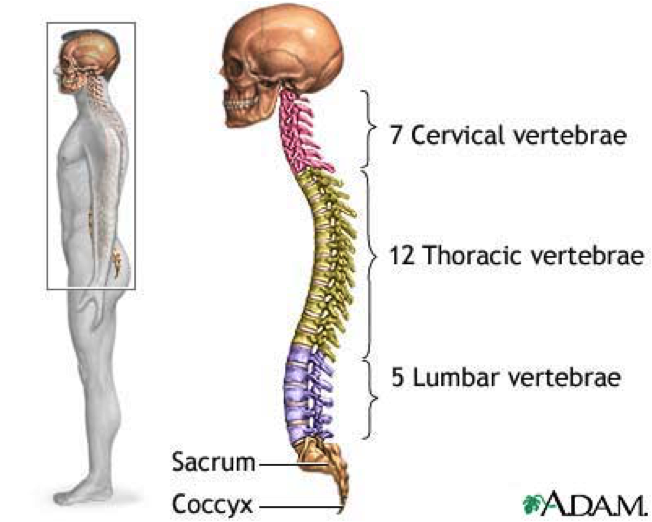 Together, your vertebra forms the spine. It supports that head and trunk, moves when you are standing or sitting, acts like a shock absorber, and protects the spinal cord.
Together, your vertebra forms the spine. It supports that head and trunk, moves when you are standing or sitting, acts like a shock absorber, and protects the spinal cord.
Between each vertebra are 3 joints that connect them to the level above and below. There are 2 facet joints at the back and 1 disc in the front.
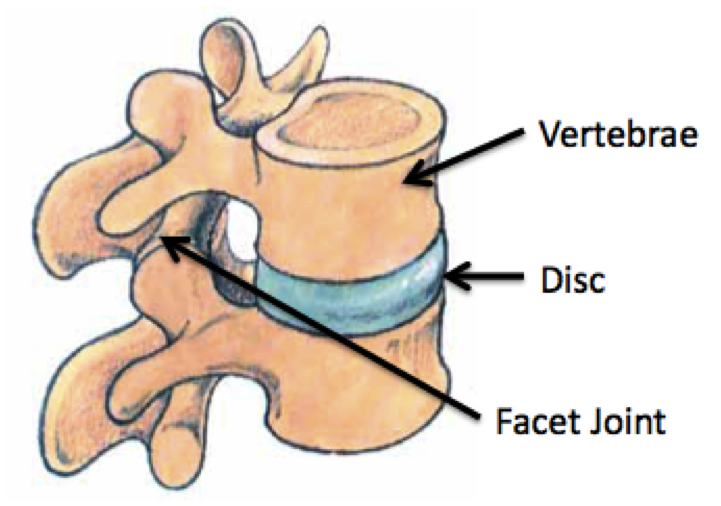
Between the spine and skin of the back are several layers of muscles
What Happens To My Back When I Am Sitting?
If you think of a plumb line going through your back (2) that should divide the forces in front and behind to put the least amount of stress on the joints.
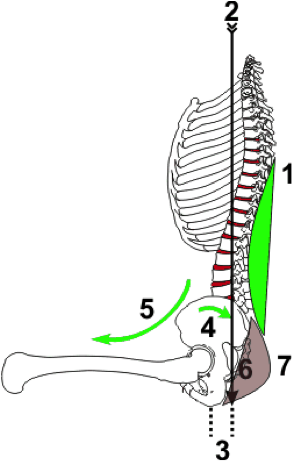
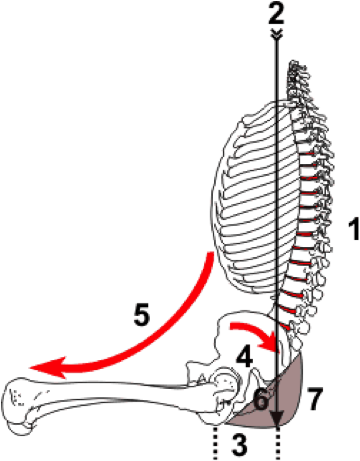
The natural curve in your low back helps to maintain the shock absorbing and protecting capabilities of the spine.
When you are sitting, your back rounds into a banana shape and migrates backwards, reducing the mechanical advantage that your back muscles have. When your pelvis is pushed forward the weight of your chest and head are pushed in front of the spine.
The “sit bones” (3) under the pelvis, which take most of the weight, are a long way in front of the spine, which rotates the pelvis backwards. This tends to slide the legs along the seat cushion, creating more pelvis rotation. As the pelvis rotates, the tailbone (coccyx) is moved underneath and the tip can be loaded painfully in bend on the seat cushion. The buttock muscles also move underneath and the constant pressure on them inhibits their blood supply.
The supported spine, as seen above, is in its “S” shape with the weight of the torso going through the lower spine so that it is in balance. The plumb line (3) is much closer to the sit bones, reducing the tendency of the pelvis to rotate backwards. This, in turn, reduces the tendency of the legs to slide along the cushion, so the posture is more stable. The tailbone is more upright away from the cushion, and the buttock muscles are withdrawn behind the pelvis instead of being underneath.
The bottom line is the muscles aren’t as strong. Your muscles work best when they are a medium length, not fully lengthened and not fully shortened. When you are sitting with a rounded back, the muscles behind the spine are lengthened, meaning they loose strength.

When the muscles can’t create as much force and strength, we begin to rely on passive structure. These are joints, ligaments and begin acting near the end range of motion. So, the more banana shaped out spine becomes, the more we rely on ligaments and joints. This is important because once we get to that point we aren’t putting compressive forces through the spine any more. We start putting shearing or gliding forces through the spine. This is the worst type of force for our spine.
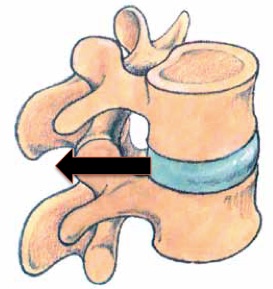
Your spine was designed to withstand compression forces. When the spine is aligned and well supported the force on the spine is compression type force. When your back is rounded, the spine is not as well stacked, causing force to push from the side known as shear. This is the worst type of force that the spine can handle.
More shearing forces means more stress on the discs, particularly the back of the disc.
How do I prevent shearing?
Using ergonomic aids such as a chair and desk help to maintain good posture. Most people think that as long at your sit with your hips and knees bent at 90 degrees you maintain perfect posture. This is true, however being in any one position for a long time puts stress on muscles, ligaments, bones, joints, even if it is the perfect ergonomic posture.
So how do you compensate for that. Change positions. We are always taught that there is one perfect position. However, changing positions and placing load on different structures helps to keep them healthy and minimizes pain and injury. The best thing that you can do is take mini breaks. This should be the opposite type of activity that you perform normally, so if you are sitting at your work station, stand up and stretch.
Here are a few examples of ways to move while taking a mini-break
Extend your hands slowly over your head, open your chest and squeeze your shoulder blades together, take a deep breath and bring your shoulders and arms down.
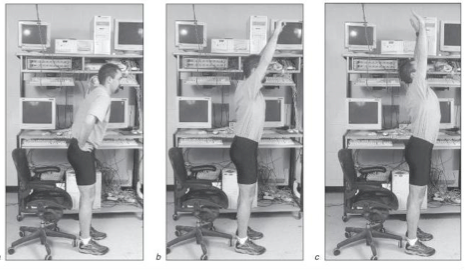
But I don’t have time to take min breaks. Be creative. Whenever someone calls you, stand up to answer the phone. Talk while you are standing. Stand to send a message or email. Make it a challenge for you and your team to support each other.


